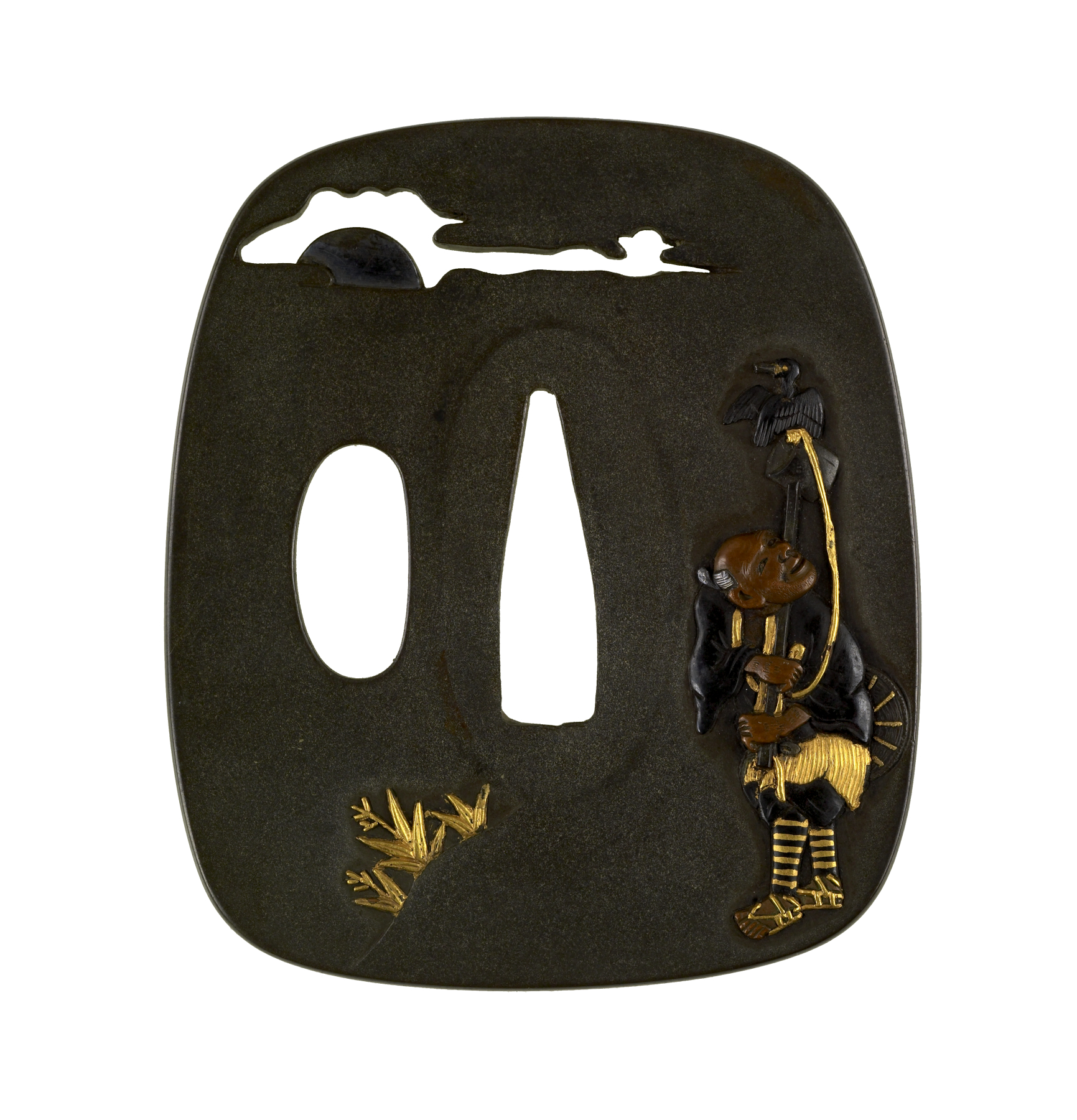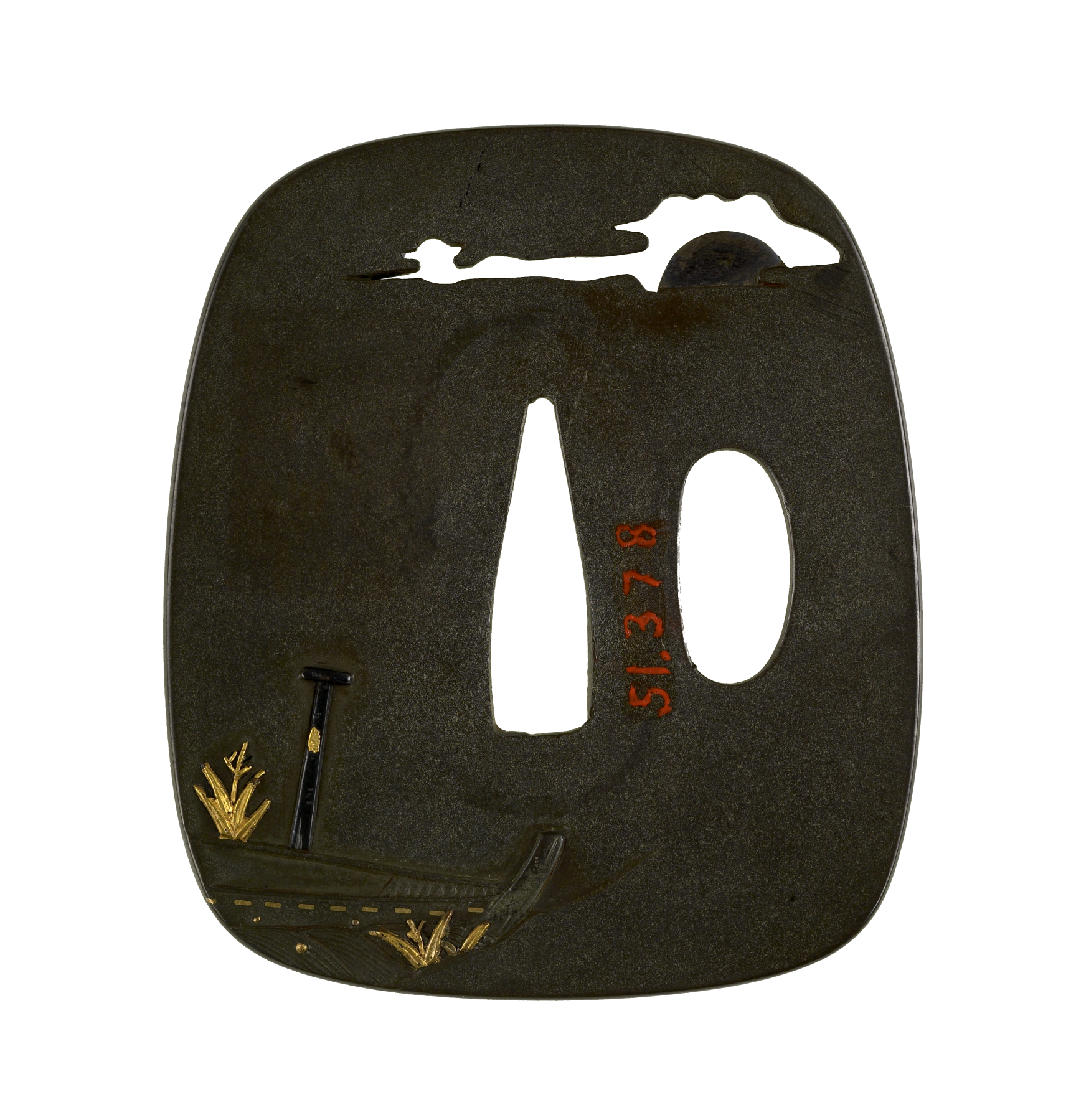Tsuba with a Cormorant Fisherman
(Japanese Military Armor)
The man at the right holds a large ladle upon which a cormorant bird is perched. He holds a lease for the bird in his right hand. Cormorants were traditionally used to catch fish in rivers in some parts of Japan. A ring was tied around the bird's neck to prevent it from swallowing the fish it caught. The moon in clouds at the upper left of the tsuba indicates that this is night time, when cormorants were used for fishing. On the reverse is a boat at a river bank.
Inscription
Provenance
Provenance (from the French provenir, 'to come from/forth') is the chronology of the ownership, custody, or location of a historical object. Learn more about provenance at the Walters.
Henry Walters, Baltimore [date and mode of acquisition unknown]; Walters Art Museum, 1931, by bequest.
Geographies
Japan (Place of Origin)
Measurements
H: 2 3/4 × W: 2 3/8 in. (7 × 6 cm)
Credit Line
Acquired by Henry Walters
Accession Number
In libraries, galleries, museums, and archives, an accession number is a unique identifier assigned to each object in the collection.
In libraries, galleries, museums, and archives, an accession number is a unique identifier assigned to each object in the collection.
51.378




